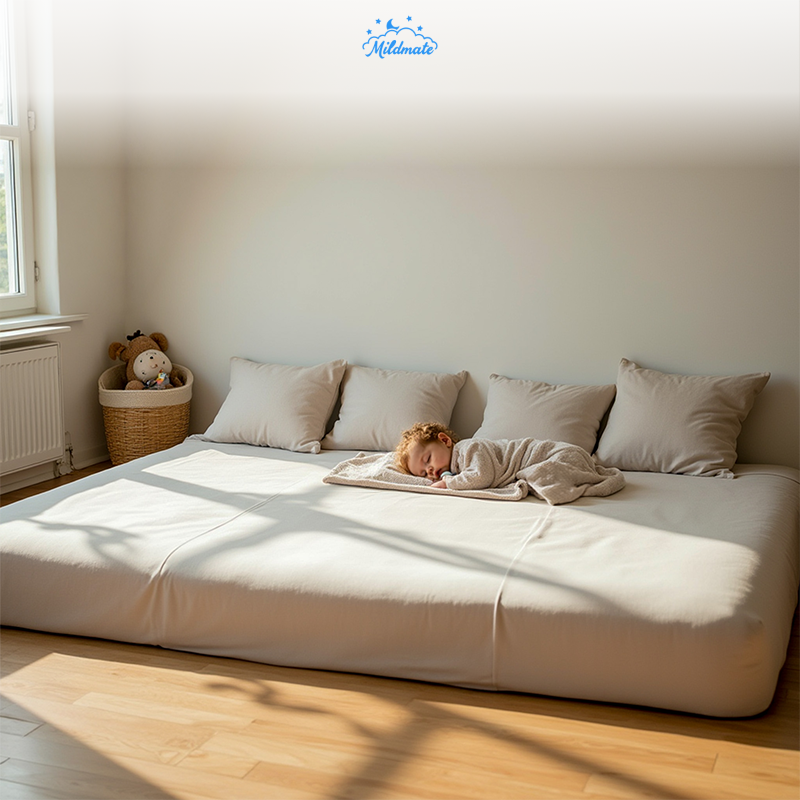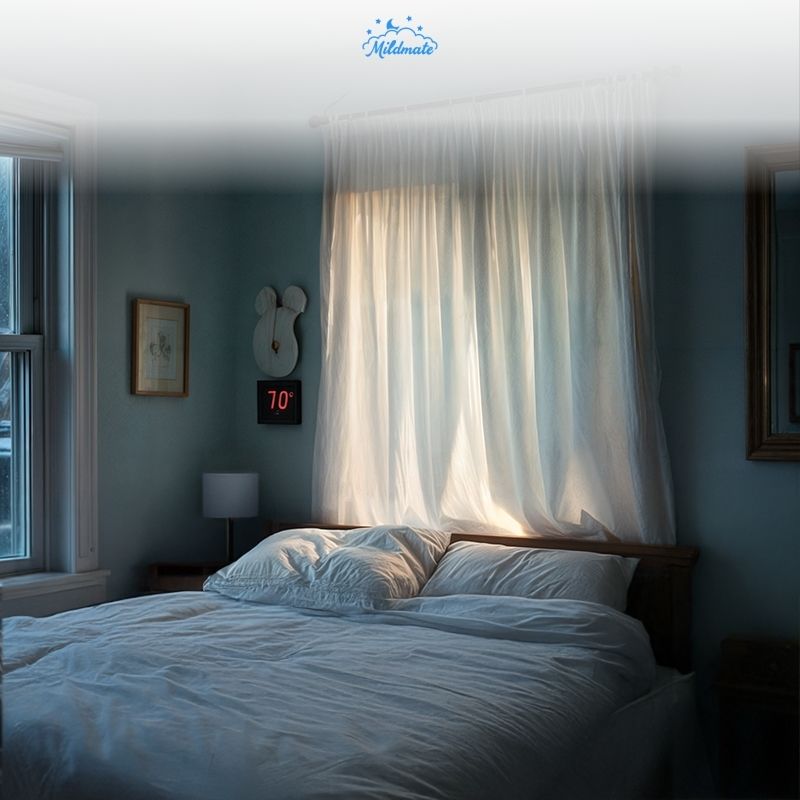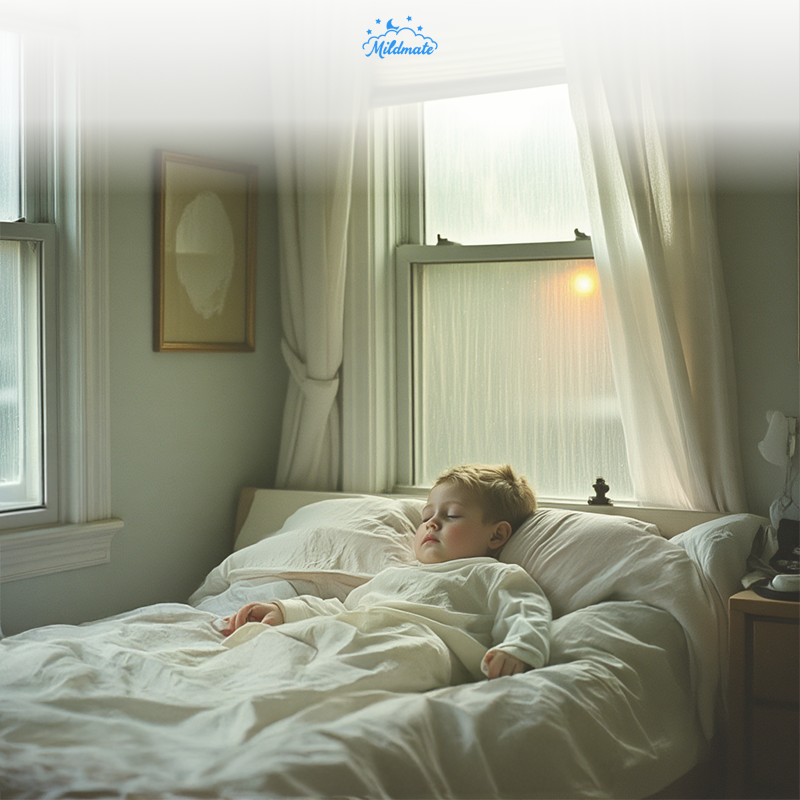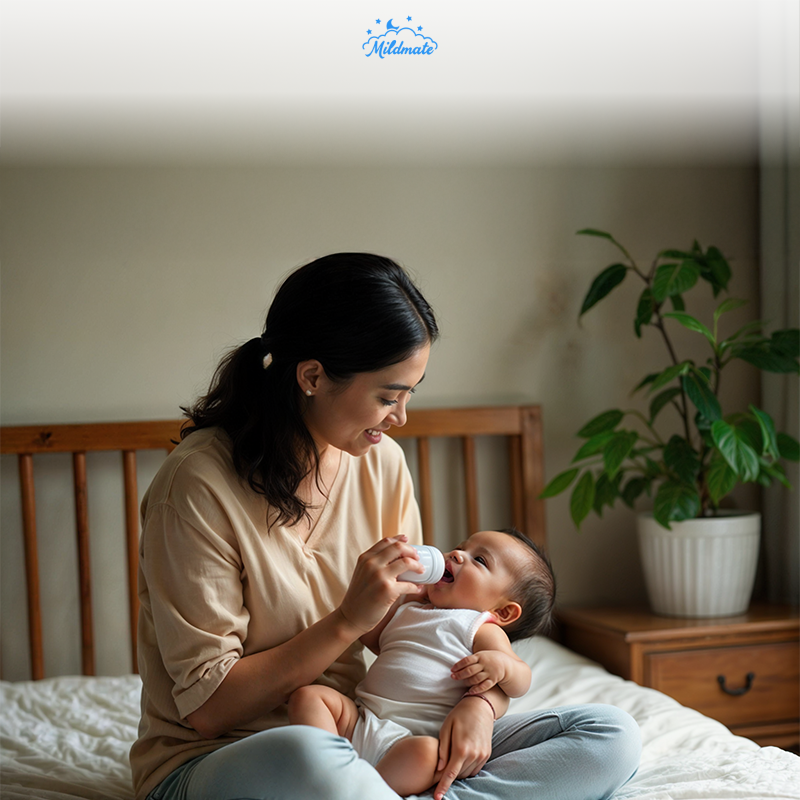Understanding Co-Sleeping Safety
Co-sleeping, when practiced safely, can support bonding and facilitate nighttime feeding. This guide helps families create a safer sleep environment using evidence-based practices.
Essential Safety Guidelines
🛏 Sleep Surface Requirements
-
Use a firm, flat mattress
-
Ensure mattresses fit together snugly with no gaps
-
Avoid waterbeds or extremely soft surfaces
-
Keep bed away from walls to prevent entrapment
-
Place mattress on the floor if needed for fall prevention

🌡Temperature Management
-
Maintain room temperature between 68-72°F (20-22°C)
-
Avoid overdressing sleepers
-
Use breathable bedding like our BreezePlus fitted sheets
-
Monitor for signs of overheating
-
Consider separate light blankets for adults and children

🧸 Creating a Clear Sleep Space
-
Remove unnecessary pillows
-
Keep stuffed toys out of the sleep area
-
Avoid loose blankets and sheets
-
Use properly fitted sheets (like our custom-sized options)
-
Ensure no gaps between mattresses or bedding
👶 Baby's Sleep Position
- Place baby on back to sleep
- Position baby at adult chest height
- Keep baby away from pillows
- Ensure baby can't roll out or get trapped
- Create a clear space around baby's head

Recommended Sleep Arrangements
✅ Safer Co-Sleeping Setups:
-
Side-car crib configuration
-
Securely attached to adult bed
-
Matched height with adult mattress
-
No gaps between surfaces
-
-
Floor Mattress Setup
-
Firm mattresses on floor
-
Space around edges for movement
-
Easy access for feeding
-
-
Combined Mattress Arrangement
-
Properly secured together
-
Consistent firmness throughout
-
Fitted with appropriate sized sheets
-
❌ Arrangements to Avoid:
-
Couches or recliners
-
Mattresses with large height differences
-
Beds with headboards/footboards with gaps
-
Multiple pillows or thick comforters
-
Spaces between wall and mattress
Creating Your Safe Sleep Space
📏 Bedding Guidelines:
-
Use fitted sheets that:
-
Fit perfectly without loose fabric
-
Stay secure all night
-
Are breathable and temperature-regulating
-
Can be firmly tucked
-
-
Consider separate top coverings:
-
Light blankets for adults
-
Sleep sacks for babies
-
Temperature-appropriate options
-
🛠️ Setup Checklist:
-
Measure your sleep surface
-
Check for gaps and fill them safely
-
Install proper safety barriers if needed
-
Use correctly fitted sheets
-
Remove unnecessary bedding
-
Ensure proper ventilation
Special Considerations
🌙 Night Feeding
-
Easy access for nursing
-
Clear path to bathroom
-
Minimal disruption to others
-
Proper support for feeding parent
🏃 Getting In/Out
-
Clear pathways
-
Stable surfaces
-
Proper lighting
-
Easy adult access without disturbing baby

When to Adjust Your Setup
📈 Development Stages:
-
Newborn needs
-
Rolling baby adaptations
-
Crawling safety measures
-
Toddler considerations
🔄 Regular Safety Checks:
-
Daily bedding inspection
-
Weekly setup assessment
-
Monthly thorough evaluationSeasonal adjustments
-
Seasonal adjustments
Additional Resources
📚 Recommended Reading:
-
Safe sleep guidelines
-
Co-sleeping research
-
Attachment parenting resources
-
Family bed transitions
🤝 Professional Support:
- Consult pediatricians
- Work with sleep consultants
- Join support groups
- Connect with experienced families

Product Care for Safety
🧺 Maintaining Safe Bedding:
-
Regular washing schedule
-
Proper fitting checks
-
Damage inspection
-
Replacement guidelines
✨ Our BreezePlus Contribution:
-
Dust mite resistance for health
-
Temperature regulation
-
Secure fitting design
-
Easy maintenance







